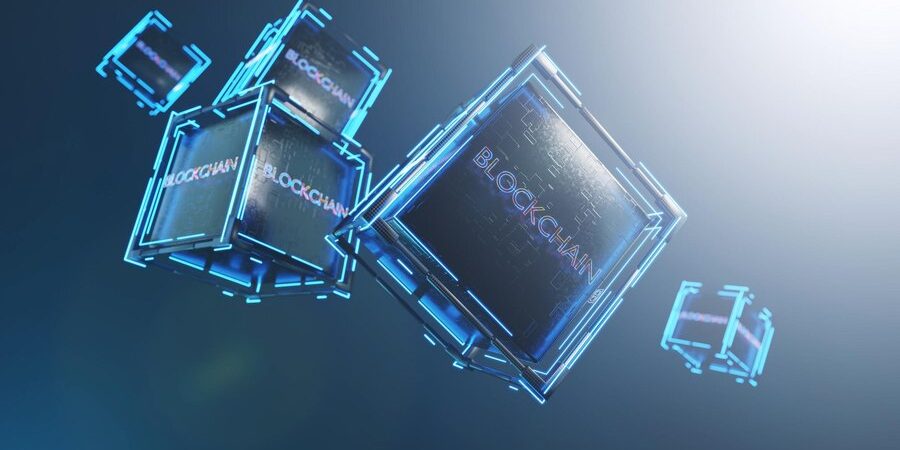The gas fees on Ethereum have reached an average amount of 20 US dollars per transaction in 2024 at its peak congestion. To a lot of users this has made basic token exchanges ridiculously costly. Enter Layer 2 solutions: the game-changer technology that is transforming our way of thinking when it comes to blockchain scalability.
In 2025, there are two giants that dominate the space. ZK-Rollups and Optimistic Rollups are both overall faster and cheaper transactions but very different in what they are trying to fix. Your project success, user experience and sustainability may depend on the selection between the two.
What Are Rollups?
Rollups are Layer 2 solutions to scaling transactions off-chain and grouping the information about transactions in packages before relaying them to the primary chain. Consider them to be express lanes on the highway. Rollups create separate lanes on a toll road which can be offered to cars (transactions), instead of all of them having to share space on the main road (Ethereum).
The two types of rollups relieve congestion and offload computation on the Ethereum base layer and result in a massive increase in transaction throughput with the same level of security assurances on the main chain. The major distinction is how these bundled transactions are validated.
Understanding ZK-Rollups
ZK-Rollups (or Validity Rollups) rely on powerful cryptography to demonstrate the validity of transactions but not the specifics of a transaction. They pack hundreds or thousands of off-chain transfers into one batch and then construct a zero-knowledge that mathematically proves the validity of all transfers.
These are the way they happen:
The first step is off-chain execution. Transactions are handled by specialized operators known as sequencers that are off-shot on the Ethereum main chain. The transactions are then aggregated into batches and a cryptographic verification of validity created. This proof is submitted in the proof submission stage and forwarded to Ethereum together with state changes. Last but not least, there is on-chain verification which refers to Ethereum smart contracts verifying the proof and updating the state.
ZK-Rollups are beautiful because they have immediate finality. As soon as a proof is proved correct and accepted by Ethereum, the users receive access to their funds. There are no waiting times, no assumptions of trust outside of the cryptography.
ZK-Rollups Key Benefits
ZK-Rollups can be used to achieve greater scalability by shifting the actual computation to off-chain, and publishing on-chain only the sufficient data. Zero-knowledge proofs provide a highly significant security boost because the validity of the transactions is mathematically ensured. Compared to other scaling solutions users can enjoy confirmations and withdrawals that are faster, and in some implementations the funds can be accessed in minutes as opposed to days.
Another strong benefit is privacy. Although the existing ZK-Rollups place emphasis on scalability, the technology on which they are premised has the capability to be implemented at a broader level to offer transaction privacy functionality. Gas fees remain cheaper as only condensed proofs of validity and final state change are deposited on Ethereum.
Working with Optimistic Rollups
Optimistic Rollups have a different way of philosophy. They presume validity of all transactions, unless a person can prove otherwise. Such an optimistic assumption will permit faster processing at the cost of creating a challenge period, during which disagreements may occur.
Here is how it works: the transactions are processed off-chain and are combined into batches. Such batches are delivered to Ethereum with little validation. A challenge time frame of usually 7 days ensues, whereby any person can challenge invalid transactions by offering fraud proofs. Provided that no difficulties occur, the batch turns to be final.
This system is based on the economic factor and community awareness. The network is tracked by validators, and they do punish those who commit malicious actions in the case that their fraud is discovered and proved. The trade-off? The system requires that users wait out the challenge period before they are able to withdraw to the main chain of Ethereum.
Optimistic Rollups in Idea
This idea has been optimized in major implementations such as Optimism and Arbitrum. Optimism implements a single-round fraud proof and Arbitrum a multi-round interactive fraud proof to support complex smart contracts. The two strategies are a compromise between speed and safety, but they diverge when referring to dispute resolution.
Execution model is characterized by a centralized type of sequencer by ordering and processing of transactions. Nevertheless, Ethereum Virtual Machine is deterministic in nature which allows one to recompute the results using deterministic outcomes and validate. This introduces a trustless environment even with the centralized sequencing.
ZK-Rollups vs Optimistic Rollups The Clear Comparison
Finality Speed: ZK-Rollups offer instant finality when proofs are checked whereas Optimistic Rollups mean that a challenge period, lasting up to a week, will be necessary. This distinction makes a large difference in user experience particularly to applications where fast fund access is needed.
Security Models: ZK-Rollups are based on mathematical proof of security, offering form certainty of transactions. Optimistic Rollups rely on economic incentives and fraud-detection, where the upkeep of relevant assets and critical challenges of invalid transactions is imposed upon active network participants.
Computational Requirements: ZK-Rollups are computationally more intense because a lot of computing power is required to produce zero-knowledge proofs. Optimistic Rollups do not involve heavy computational overhead because of initial validity checks.
Transaction Fees: Both options will largely be orders of magnitudes cheaper than Ethereum Layer 1, though ZK-Rollups compare favorably at times because they have compressed calldata. The difference tends to differ according to specific implementation and network conditions.
The Complexity of the Development: Optimistic Rollups are more similar to the Ethereum Virtual Machine, so developers can use the already prepared tools and deploy the program with fewer adjustments. Integration can also be a challenge to ZK-Rollups, but the difference is declining in 2025.
Applications and Example Use Cases
A variety of rollup methods is preferable to different applications. ZK-Rollups are particularly well suited to privacy-focused use cases and high-frequency trading, as well as to applications that need instant finality. They are an excellent fit in most financial applications where real-time settlement is of essence because they have cryptographic guarantees.
Optimistic Rollups are the best at games, decentralized finance systems, and any use case that does not mind somewhat delayed finality. They are appealing to the developers porting existing Ethereum applications, as they are compatible with their EVM.
Both technologies can be used by DeFi protocols. ZK-Rollups may suit lending platforms since they support instant liquidation, whereas longer settlement windows of Optimistic Rollups may suit prediction markets.
The 2025 Performance Metrics
The gains in scalability when applied currently are impressive. A well-established example of a ZK-Rollup solution is Loopring; it supports 2,000 transactions per second. An Optimistic Rollup, Arbitrum, has the potential to support a maximum of 40,000 TPS. These figures are enormous upgrades over the base layer capacities in Ethereum.
The gas fees in both solutions are much cheaper than Ethereum mainnet. The mean transaction price on Ethereum has been hovering between 0.50 dollars and 0.80 dollars in 2025, whereas rollups collectively tend to charge fractions of those values. The precise costs are based on traffic and other implementation specifics.
You Decide
Your individual needs dictate the choice of ZK-Rollups or Optimistic Rollups. If you require finality within a short period of time on a set of transactions, or are interested in achieving maximum security with cryptographic proofs, or intend to deploy a privacy modification, choose ZK-Rollups. These are most suited to financial uses, large-ticket orders and customers who have a priority access to funds.
Choose Optimistic Rollups when it is important that development may be easier to integrate, that challenge periods do not matter, or you require the highest possible throughput of transactions. They are applicable to games, social media, and projects with insignificance of finality lag.
Take into consideration your technical resources too. ZK-Rollups have greater infrastructure and cryptographic demands. Optimistic Rollup entails more comfortable migration procedures of current Ethereum applications.
The Future
These two technologies are getting more advanced throughout 2025. ZK-Rollups are simplifying more in terms of developer-friendliness through tooling improvements and EVM compatibility layers. Optimistic Rollups are reducing the challenge period and enhancing fraud proof mechanisms.
The Layer 2 landscape indicates that the two approaches will continue to feature alongside each other instead of one overpowering the other. Various use cases will be attracted towards the solution that aligns with their requirements the most. There is even the possibility of hybrid projects that may use both technologies to meet the needs of diverse parts of their applications.
The rate of market adoption is growing increasingly rapid as users look to alternatives of it expensive Layer 1 transactions. The decisions of ZK-Rollups or Optimistic Rollups will shape not only the technical infrastructure, but also the user experience and business solvency in the overcrowded blockchain environment.
In your decision, be guided by the priorities of your project: the immediate definitiveness and the greatest security of ZK-Rollups, or simpler development and more throughput of Optimistic Rollups. They are both a strong step up on today limit on the Layer 1, so it would be a step in the right direction to use any one of them in terms of scalability of blockchain.



